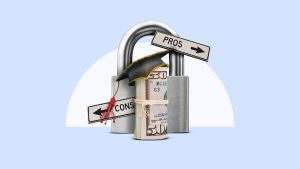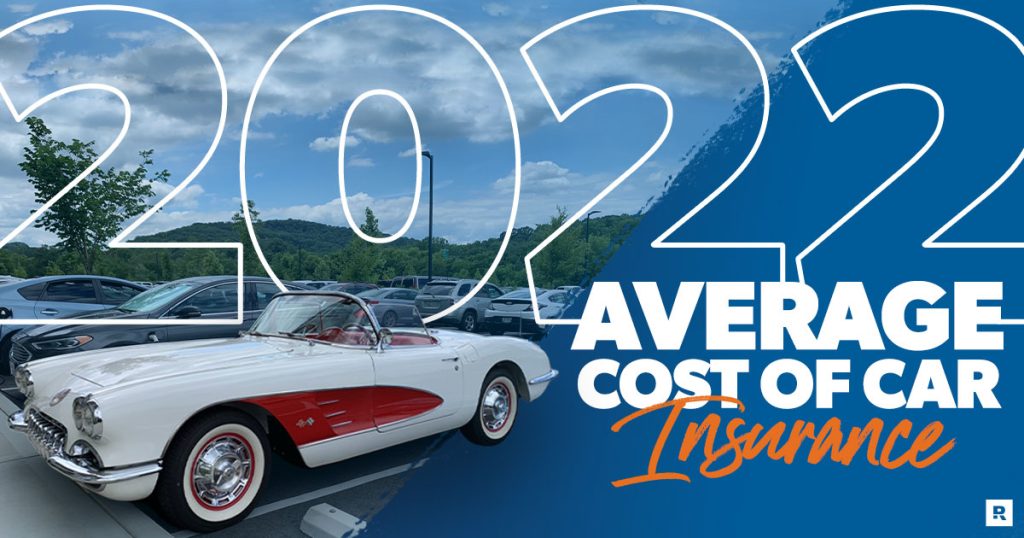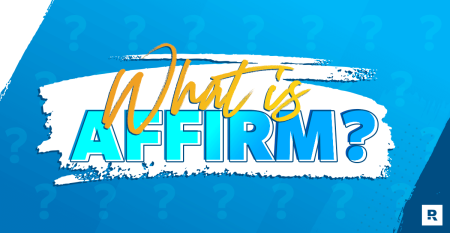Did you know the national average cost of car insurance is $1,342 for full coverage?1 (That works out to about $112 for your monthly car insurance bill.)
But remember, that’s the average. Car insurance costs vary a lot depending on a bunch of factors. So, how do insurance companies figure out how much your car insurance costs? And more importantly—how do you figure out how much to budget for insurance?
Not to worry! We’ll walk you through all the factors that affect your insurance rates, plus how you can save without giving up coverage you need.
How Much Is Car Insurance?
So, if you’ve been wondering how much car insurance is, we’ve got the answer. But first, we need to explain the big picture behind how car insurance companies figure out their prices.
Car insurance companies make money by charging you a monthly premium (aka your bill). When they have to pay for the costs of an accident, your premium goes up because they lost money. But if you’ve never filed a claim, your premium stays low because you’re less risky to insure.
That’s the big picture. But there are lots of smaller details that go into it. Things like where you live, how long you’ve been driving, and what your marital status and your age are all affect how much car insurance companies charge you. Because, to them, all those factors directly feed into the risk of insuring you.
Here’s what all that boils down to: The lower the insurance company’s risk that you’ll file a claim, the lower your premium. And the riskier you are to insure (aka the more likely you are to file a claim)—you guessed it—the higher your premiums will be.
The good news is, if you know what the insurance company’s looking for, you can actually do things to get a lower rate.
What Determines the Cost of My Car Insurance?
Let’s go over each factor that affects how car insurance companies calculate premiums. There are some things you can change and some you can’t, but they all play a part.
Age and Gender
Young drivers (ages 14–25) pay the most for car insurance. Since they’re more likely to make a rookie mistake that gets them into an accident, they’re considered high risk. Drivers ages 25–60 get cheaper rates because they’re (usually) more experienced, responsible and able to respond to road hazards quickly.
Drivers older than 60 may also see rate increases because they’re more likely to have impaired vision, hearing and reflexes, which can make them more likely to get in an accident. You can offset these rising costs by switching to an insurer that offers senior discounts.
Marital and Family Status
Single drivers pay more than married drivers for car insurance. Married people with grown kids, kids too young to drive, or no kids will typically have the lowest rates.
But if you have teen drivers—watch out—their rates can get pricey! Fortunately, you’ve got options to help your teen driver save on car insurance. You can even use this time to teach your kids about the financial responsibilities of driving. Having them pay for some or all of their car insurance now (with you there to guide them) helps them understand how insurance works. It also teaches them how to plan for and buy the right insurance on their own later.
Location
Car insurance prices are different depending on your zip code for two reasons: state laws and local risks.
Don’t let car insurance costs get you down! Download our checklist for easy ways to save.
Drivers typically pay higher premiums in the states with no-fault car insurance laws. And in any state, it can be risk to drive (or even park) your car in certain places.
For example, in big cities with crowded roads, you’re at higher risk for a wreck. And your car is more likely to be vandalized or stolen in a high-crime area. But if you live in a small town or city with low crime, you’ll likely get cheaper insurance.
Driving Record
You can’t control whether other people drive safely—but you can control yourself! That’s why many insurers offer good-driver discounts. They’ll lower your rate if you go a certain number of months without filing a claim, because you’ve shown you’re a safe driver.
On the other hand, traffic violations, tickets, DUIs or at-fault collisions will raise your car insurance rate because you’re not following the rules of the road. (How much they affect your premium depends on what happened, how many times it’s happened, and who your insurer is.)
Credit History
Your credit history also has an impact on your car insurance rates. But don’t sweat this one too much since credit scores are really just “I love debt” scores. And the more debt you pay off and money you save, the less you’ll worry about your car insurance rates.
How Much You Drive
There’s a simple reason why insurance companies ask how much you drive. Think about it—the more you drive, the higher your odds of being involved in a traffic incident or having your car damaged.
So, if you drive your car every day, use busy roads, or make long commutes, you’ll pay higher premiums than someone whose car sits in the garage most of the time.
Type of Car
This one’s simple math: The more your car is worth, the more it costs to replace or repair after a wreck. Expensive cars—like sports cars or luxury sedans—cost more to insure than cheaper ones.
Here are some other ways your car impacts your insurance:
- Age: Love that new-car smell? So do we, but we don’t love the price of insurance on new cars. Used cars cost less to insure because they’re cheaper to repair or replace. So, save your money and get a new-car air freshener for your old ride.
- Package: Package refers to the set of features that come with your car, like leather seats or a sunroof. Luxury, sport or special-edition packages can make your car insurance go up, while cars with a basic package tend to be cheaper to insure.
- Repair costs: Vehicles that are expensive to repair—like diesel trucks or hybrids—can cost more to insure.
- Safety or green features: Anything that makes your car safer or more eco-friendly could help lower your insurance rates. Talk about a win-win!
- Modifications: Turbocharged engines, lift kits and other custom parts can all raise your rates because they change the car’s value and its performance on the road.
- Risk factor: Picking a sports car as your daily driver? Yep, higher rates. Sports cars, convertibles and motorcycles are all at higher risk of causing an accident or getting seriously damaged in one.
- Color: Bright colors get more police attention—meaning you’re more likely to get traffic tickets that up your rates.
Insurance Rates by Type of Car
|
Car Type |
Annual Cost of Full Coverage Insurance |
|
Small Sedan |
$1,353 |
|
Medium Sedan |
$1,403 |
|
Subcompact SUV |
$1,298 |
|
Compact SUV (FWD) |
$1,292 |
|
Medium SUV (4WD) |
$1,296 |
|
Midsize Pickup |
$1,313 |
|
Half-Ton/Crew Cab Pickup |
$1,379 |
|
Hybrid Car |
$1,365 |
|
Electric Car |
$1,3812 |
Type of Policy
There are three main types of car insurance: liability, collision and comprehensive. Having all three types of insurance (aka full coverage) costs more than liability alone, so some people skip collision and comprehensive coverage. But carrying only liability coverage isn’t always the smartest move. (Don’t worry—we’ll cover how to save money and get the right coverage in a minute!)
Additional coverages, like Guaranteed Asset Protection (GAP), windshield coverage or Personal Injury Protection (PIP), will also increase your premium. In some states, you have to add PIP insurance to your policy—but you can drop the others.
Policy Limits and Deductibles
Car insurance always has a policy limit (also called a coverage limit), which is the maximum amount the insurance company will pay for each type of coverage.
If your policy limits are low, your car insurance cost will be lower too. Just don’t aim too low—you don’t want to face paying huge legal or medical bills out of your pocket because your policy only covered half of what you needed.
Your deductible is the amount you pay before the insurance company starts chipping in. If your policy’s deductible is low (say $500), then your premium will be higher. That’s because you’re asking the insurance company to cover more costs for you.
But if you choose a higher deductible ($1,000 for example), you’ll pay lower premiums since you’re lowering the insurance company’s risk of losing money. It’s totally one of those “you scratch their back, they’ll scratch yours” situations.
How Much Is Car Insurance for New Drivers?
Another factor that impacts how much car insurance costs is whether you’re a new driver. So, if you’re wondering how much car insurance is for a new driver, here’s what we can tell you: People who are brand-new to driving, no matter their age, can typically expect to pay more. This is partially because new drivers don’t have a driving history for the insurance company to look back on.
Another part of it is most brand-new drivers are teenagers. Since a major cause of death among teenagers in the U.S. is motor vehicle accidents, young people getting behind the wheel for the first time are simply a higher risk.3
Next you might be wondering, If I’ve been driving for a year and never been in an accident, shouldn’t my rates go down? Insurance companies consider anyone who’s been driving for less than three years a new driver. So, you might have to wait a little longer to see those premiums go down.
That said, prices for new drivers vary depending on your age, how much insurance you need, and what kind of vehicle you drive. For instance, if you’re a new driver and you’re driving a brand-new Corvette, you’ll pay more. But no matter your situation, it’s always good to shop around for the best rate.
How Can I Save Money on Car Insurance?
Now you know what goes into calculating your car insurance premium, so let’s look at ways to save money on car insurance. Here are some of our favorites:
Raise your deductible.
We recommend raising your deductible to $1,000 and saving up a fully funded emergency fund to cover that cost if an accident does happen.
Look for discounts.
Did you know you can get discounts for joining a professional group, taking driving classes, or paying your insurance twice a year instead of monthly? Teen drivers in high school and college students can get discounts for getting good grades! Ask your insurance agent what discounts you qualify for.
Buy a used car.
Used car insurance is cheaper than new car insurance. We recommend saving up and buying a reliable, great-looking used car with cash. But watch out for salvage title and rebuilt title used cars—those can actually be more expensive to insure. Take a look at our free Ramsey Car Guide for some help finding the perfect used car for you.
Bundle your coverages.
Bundling your car insurance with your homeowners insurance, renter’s insurance, other cars or your spouse’s policy can lower your rates.
Shop around for coverage.
You may be able to get the same coverage for less from a different insurer. Look around on your own or work with an independent insurance agent who can get quotes from different companies and help you pick the right one.
Get only the essential coverages.
Let’s get something straight: Having the right car insurance is way more important than having the cheapest car insurance!
You need at least $500,000 in liability insurance to pay for the other driver’s costs after an accident (and to protect you from lawsuits). But comprehensive and collision coverage depend on your car and your financial situation.
You need comprehensive and collision if your car is less than 10 years old and:
- You owe money on it
- You don’t have enough savings to pay cash for a vehicle of similar value
You don’t need comprehensive and collision if:
- You have enough cash to repair or replace your car
- Your car is over 10 years old (most insurance companies don’t sell these coverages for older cars, because the car isn’t worth the risk of insuring it)
Be smart. Use our suggestions above to estimate your car insurance cost before you buy a car.
Ways to Save on Car Insurance Checklist
Don’t let car insurance costs get you down! Here’s a checklist for easy ways to save.
How to Get Cheap Car Insurance
We get it. It’s tempting to look for the cheapest car insurance or just carry the minimum coverage—but that cheapo stuff may not give you enough coverage to truly protect your car (or your finances).
But here’s the good part: You can have the best of both worlds. Our team of Endorsed Local Providers (ELPs) will help you get the right car insurance, so you’re actually covered, and they’ll compare auto insurance rates for you to make sure you’re getting the best deal. Plus, they’re RamseyTrusted—so you’re partnering with someone who won’t just help you get the best deal on car insurance, they’ll help you understand your coverage too.
Connect with an auto insurance agent today!
Read the full article here










